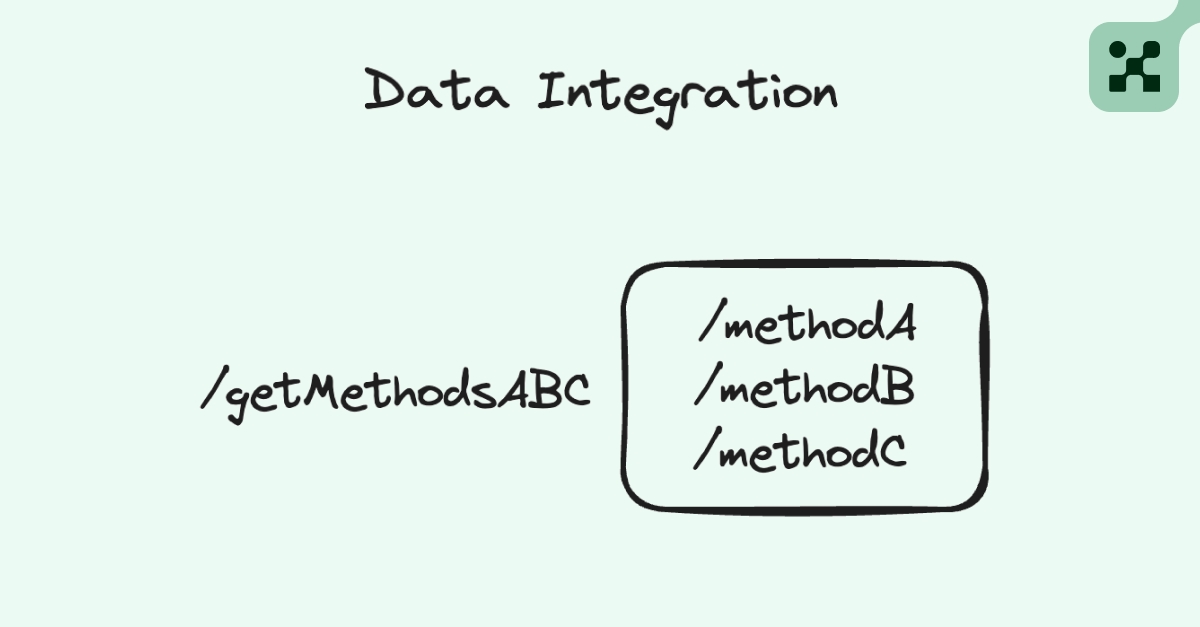As headless commerce architectures become increasingly more popular, it's crucial for developers to understand how data is managed within these systems.
During many of our public and paid workshops we've noticed that concepts such as data orchestration and data integration can be confusing and hard to grasp. So we'll try our best to cover these concepts thoroughly and explain how to use them with Alokai in this article.
Data integration
Data integration involves combining data from different sources into a single view. In the context of headless commerce, this means aggregating product information, customer data, inventory levels, and other relevant ecommerce data from various backend systems into a single cohesive API call.
Think of it like going to the supermarket. If you only need one item, you would go, pick it up and return. However, when you need multiple items, instead of making separate trips for each of them, you'd collect everything at once – effectively integrating all your purchases into a single supermarket trip.
The same concept applies to data. If you have multiple requests to various backend services that can be logically grouped into one function, you employ Data Integration. Essentially, you're creating a single comprehensive API call that internally makes a series of smaller API calls to different services.

Data orchestration
Data orchestration refers to the automated arrangement, coordination, and management of complex data interactions. It goes beyond simple integration by not only merging data but also managing the data flow across different systems and processes.
In headless commerce, data orchestration might involve coordinating data between your ecommerce platform, your content management system (CMS), and your customer relationship management (CRM) system to ensure they all have the most up-to-date and consistent information.
A typical scenario involves API calls that are dependent on each other, such that the response from API call A is fed into API call B, and its response is then fed into API call C.
Think of it like a relay race. Just as the baton is passed from runner to runner, a specific sequence of events is followed in data orchestration. Each subsequent API call depends on the success and outcome of the previous one. This allows for complex, multi-step data interactions to be managed efficiently and reliably.

So, what's the difference?
In conclusion, while data integration and data orchestration might seem similar, they serve distinct purposes. Data integration is about combining data from different sources into a single view, while data orchestration involves managing and coordinating the data flow between different systems and processes.
Alokai Connect: Bridging integration and orchestration together
Alokai provides a robust solution for headless commerce by utilizing a powerful middleware layer that handles both data integration and data orchestration – Alokai Connect. This middleware acts as an intermediary between the frontend and various backend systems, facilitating the flow of data and ensuring that all interactions are optimized for performance and scalability.
Using Alokai Connect, you can add custom methods to the default middleware to create data integration or orchestration endpoints. Through API aggregation, these new methods provide access to all integrations used in your application. Consequently, you can utilize any connected backend services from a single endpoint.
But why would you do it in the middleware and not just the frontend?
Of course, you could simply create a single function to call a few different endpoints, and off you go. This is indeed a viable solution, but it brings unnecessary complexity to frontend applications and can quickly become a performance bottleneck.
By bringing these complex and heavy operations to the middleware, you run them on the server, offloading this task to a more powerful machine that can scale almost infinitely and does not block your frontend application.
Final thoughts
For developers working within the headless commerce landscape, understanding and implementing data integration and orchestration is key to building efficient and scalable applications.
Alokai Connect provides a powerful toolkit for managing these processes, ensuring that data flows smoothly across the ecommerce ecosystem and that applications remain robust and responsive to the needs of the business.
As headless commerce evolves, middleware's role in data management grows in importance. It's crucial for developers to stay knowledgeable and skilled in these technologies to construct resilient ecommerce solutions for the future.
Ready to incorporate data integration and orchestration in your headless commerce stack? Contact us for a demo.
.png)